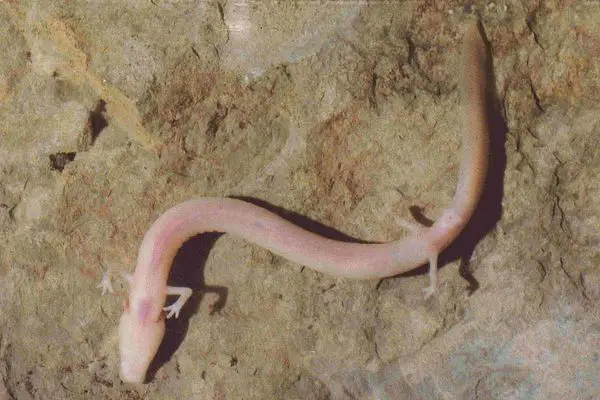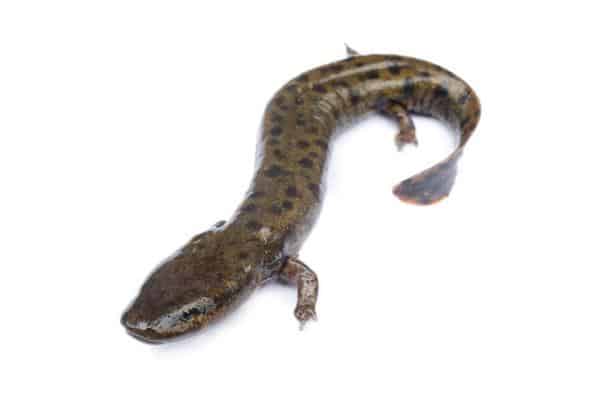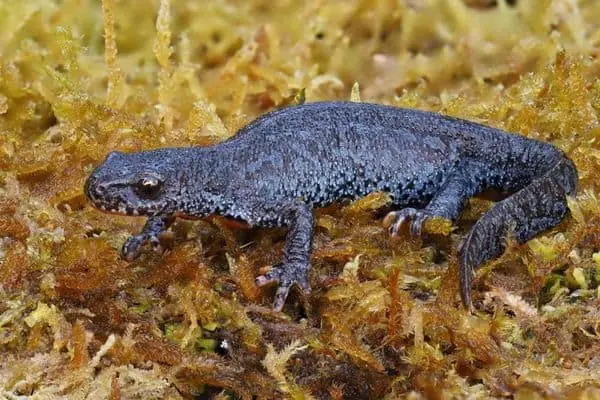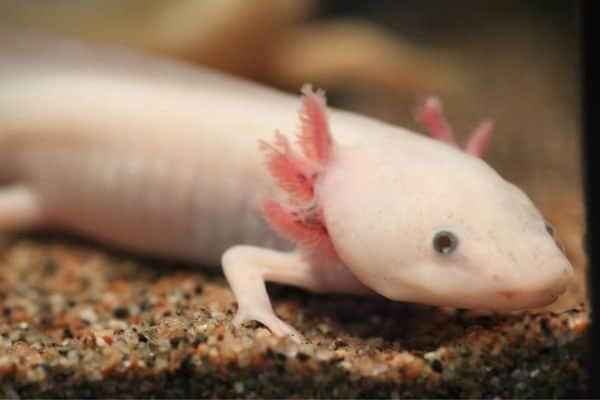Salamanders are fascinating creatures. They come in a wide variety of colors and shapes, and can be found living in almost every habitat on Earth—including underwater! Salamanders are one of nature’s most unique amphibians, living in ponds, rivers, and lakes. And if you want to learn more about these fantastic creatures, we have just the thing for you: an exciting list of salamanders that live in water!
12 Salamanders that Live in Water
In this post, we’ll cover the 12 salamanders that live in water. So, let’s start!
1. Iberian ribbed newt

Scientific Name: Pleurodeles waltl
The Iberian ribbed newt, also known as the Iberian newt, is a salamander species native to Spain and Portugal. This small animal has vertical black or dark brown stripes down its back, a flattened body shape, a wide head, and short limbs to help it swim.
This newt lives in cool mountain streams, eating aquatic insects and other small invertebrates. It lays eggs near bodies of water, sometimes on rocks or vegetation near waterfalls or rapids where currents are strong enough to keep the eggs from being swept away before hatching time.
2. Lake Lerma Salamander
Scientific Name: Ambystoma lermaense
The Lake Lerma Salamander is an aquatic amphibian with a long tail and large hind legs for swimming. They have very small front legs that are used for digging burrows in soft soil along the shoreline, and their colors range from tan to brown or red, with yellow spots or stripes on their body.
These salamanders can be found in pine-oak or mixed pine-oak forests with permanent running water. They are frequently found near waterfalls or cascades, and their average lifespan is about 16 years.
3. Japanese fire belly newt

Scientific Name: Cynops pyrrhogaster
The Japanese fire belly newt is a small amphibian native to Japan and Taiwan. It is also known as the red belly newt and the red-bellied newt.
These newts are nocturnal and prefer moist environments like ponds and streams, where they feed on insects, worms, snails, slugs, and other small invertebrates.
These newts are also known for their ability to breathe using their skin, which is why they can survive in water that does not contain oxygen.
4. Mandarin salamander

Scientific Name: Tylototriton verrucosus
The Mandarin salamander is a small, slimy creature found in China’s forests. The body of this creature is brown or black with yellow stripes, and its tail has two broad pale yellow stripes. The Mandarin salamander stores fat in its tail, which allows it to survive during hibernation.
The Mandarin salamander can grow to be 3 inches long and 1 ounce in weight. It lives in burrows that it constructs with its powerful front legs, which it also uses to dig and catch prey. This salamander eats small insects, worms, slugs, snails, and other amphibians such as frogs and newts.
5. Olm

Scientific Name: Proteus anguinus
Olm is a type of blind cave salamander found in southeast Europe’s Dinaric Karst region. They are Europe’s only troglobitic vertebrate species.
Caves, underground rivers with fast currents, and karstic springs are among their natural habitats. Because they lived in caves, they did not need to see the light, so their eyes never developed.
Olm’s skin is whitish in color because it reflects light, allowing them to navigate their environment without being noticed by predators or prey.
6. Lake Pátzcuaro Salamander

Scientific Name: Ambystoma dumerilii
The Lake Pátzcuaro salamander belongs to the Plethodontidae family of salamanders. They are only found in Lake Pátzcuaro in Michoacán and are endemic to Mexico.
These salamanders can be found in small streams, ponds, and lakes with dense vegetation and prefer to spend the day hiding under rocks or logs since they are mostly nocturnal creatures.
Lake Pátzcuaro salamanders also eat invertebrates such as worms, snails, insects, and crustaceans. They also feed on algae and fungi, which they scrape off of rocks with their teeth.
7. Mudpuppy

Scientific Name: Necturus maculosus
Mudpuppy (Necturus maculosus) is a salamander that can only be found in the United States. This aquatic salamander is distinguished by its large flat tail and broad head.
Mudpuppies live under logs or rocks near bodies of water, such as lakes and streams, where they can eat fish and other insects found in the water. They live on water throughout the year, except during the cold winters when temperatures drop below freezing, causing many species, including this one, to hibernate until spring.
8. Alpine Newt

Scientific Name: Ichthyosaura alpestris
The Alpine newt is a small amphibian found all over Europe. These creatures range in length from 3 to 6 inches and have smooth, moist skin that ranges in color from red to brown.
Females have a dark belly with light spots, while males have a yellowish-orange belly. They also have long tails and short legs.
Alpine newts prefer to live near bodies of water such as lakes, ponds, and streams. They hibernate under leaves or rocks during the winter months until spring returns and mate when they emerge from hibernation in late spring. After mating, the female lays eggs, which hatch into tadpoles that must be cared for until they mature enough to live independently.
9. Anderson’s Salamander

Scientific Name: Ambystoma andersoni
Anderson’s Salamander is a species of salamander. They have been spotted in Minnesota, Canada, and Illinois and are found in the Great Lakes region.
These creatures are also called Northern Dusky Salamanders. The name “dusky” comes from their dark dorsal coloration, which usually matches their surroundings.
They are brownish-gray with dark blotches on their backs and sides. Their skin is dry and rough, which aids in camouflage when they are hiding from predators. The animal’s underside is lighter in color than the top side, but it still has some dark spots on it.
10. Axolotl

Scientific Name: Ambystoma mexicanum
The Axolotl is a salamander species native to Mexico. They are well-known for their ability to regenerate limbs, which is why they are also known as “waterdogs.”
These unique creatures are renowned for their striking appearance as well. They have large eyes and a head with external gills for breathing.
The Axolotl eats worms, snails, insects, and other small invertebrates and can be found in lagoons and marshes near waterfalls and springs. Due to their ability to regenerate limbs, Axolotls are one of the salamanders used in scientific research.
11. Leora’s Stream Salamander

Scientific Name: Ambystoma leorae
The Leora’s Stream Salamander is endemic to California and Oregon, where they live in clear streams or rivers with fast-moving currents. You can also find them in large lakes and reservoirs with lotic zones. The largest population of this species can be found at Mt. Shasta in California, where it is native to an area of just under one square mile.
This salamander has a long, slender body and long legs, allowing it to move quickly through the water. Its belly is usually lighter than its back, with some individuals having a single darker stripe down each side of their body, and it has small, round eyes that are set high on its head above the nostrils.
12. Hellbender

Scientific Name: Cryptobranchus alleganiensis
The Hellbender is one of North America’s largest salamanders. They are capable of growing up to 2 feet in length and 6 pounds in weight!
These salamanders have thick bodies with a flattened tail and smooth skin that is usually brown or dark gray but can occasionally be black or olive green. Hellbenders also have large heads with short snouts, and their bellies are usually lighter than their back sides.
These creatures spend the majority of their time buried beneath rocks or dirt to avoid being seen by predators such as birds or fish that might eat them. They also live in cool, clear creeks and rivers with plenty of rocks to hide under during the day when there aren’t many animals around.



